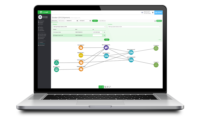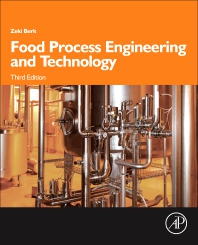Walmart, Sam’s Club utilize blockchain technology to achieve end-to-end food traceability
The aim is to now extend the technology to help reduce the number of people who fall ill during food incidents while at the same time reducing losses for retailers and suppliers during a recall.
Walmart, Bentonville, Ark., and Sam’s Club will ask suppliers of leafy greens to implement real-time, end-to-end traceability back to the farm using blockchain technology by this time next year. For food safety, this helps to more accurately pinpoint issues in the food chain and further protect customers against foodborne illnesses.
In March 2017, Walmart began working with IBM, North Castle, N.Y., and 11 other food companies to develop a blockchain-enabled food traceability network built on open-source technology. In an initial pilot conducted by Walmart and IBM, the amount of time it took the retailer to trace an item from store to farm was reduced from 7 days to just 2.2 seconds.
The aim is to now extend the technology to help reduce the number of people who fall ill during food incidents while at the same time reducing losses for retailers and suppliers during a recall.
“We’re committed to providing our customers with safe, quality foods,” says Frank Yiannas, vice president of food safety for Walmart. “Our customers deserve a more transparent supply chain. We felt the one-step-up and one-step-back model of food traceability was outdated for the 21st century. This is a smart, technology-supported move that will greatly benefit our customers and transform the food system, benefitting all stakeholders.”
The new blockchain requirements are in addition to Walmart’s food safety program that requires suppliers of fresh leafy greens such as romaine lettuce and spinach to achieve prevention-based certifications against one of the Global Food Safety Initiative (GFSI) internationally recognized standards.
“Customers trust us to help them put quality food on their tables for themselves and their families,” says Charles Redfield, executive vice president of food, Walmart. “We have to go further than offering that great food at an everyday low price. Our customers need to know they can trust us to help ensure that food is safe. These new requirements will help us do just that.”
The Centers for Disease Control and Prevention (CDC), Atlanta, consulted with Walmart to improve traceability to help public health officials investigate foodborne disease outbreaks and find the source of contaminated food.
“Enhanced ability to trace a contaminated food back to its source will help government agencies and companies to identify the source of a foodborne disease outbreak, coordinate more effective recalls of foods thought to be contaminated and learn where past problems began,” says Robert Tauxe, director of CDC’s foodborne, waterborne and environmental diseases division. “We think these steps will strengthen future prevention efforts and better protect the public’s health from the threat of foodborne illness.”
Looking for a reprint of this article?
From high-res PDFs to custom plaques, order your copy today!








